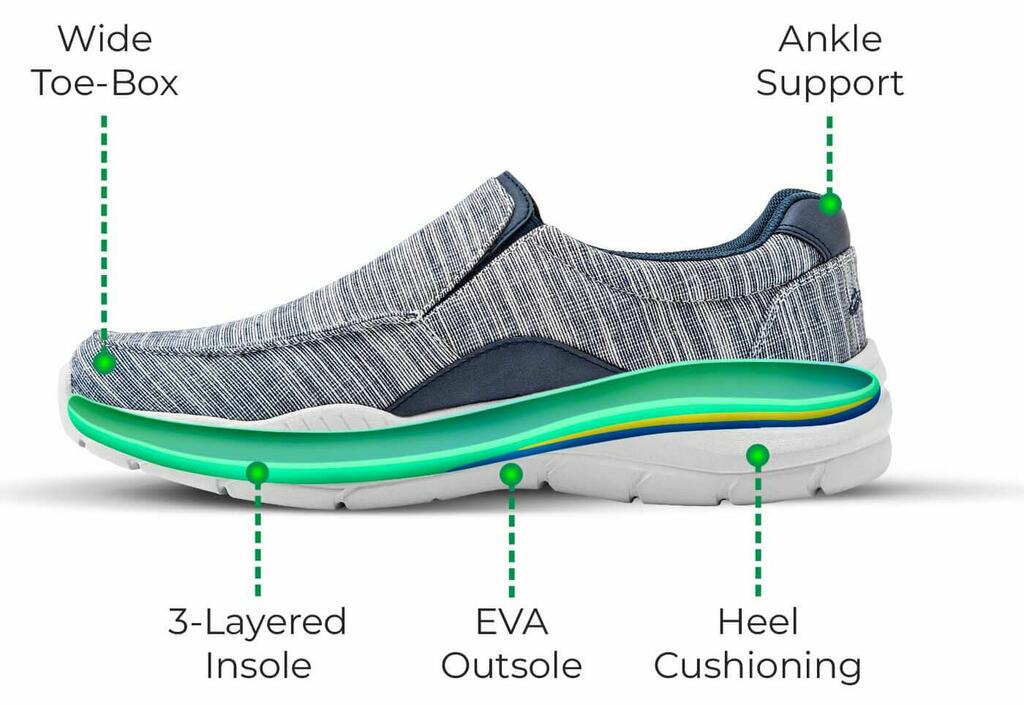How Barefoot Shoes Can Improve Foot Health: A Natural Solution for Common Foot Issues By John Keller | January 6, 2025 Foot health is essential for overall well-being, yet many…
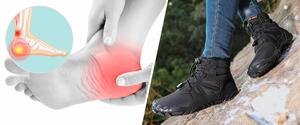
Nursing shoes are more than just footwear for healthcare professionals; they are a critical component of their daily uniform that can significantly impact their comfort, performance, and health.
Understanding what makes a nursing shoe great involves delving into the materials and design aspects that contribute to its functionality, durability, and comfort.
In this article, the Canles team will explore these elements in detail, providing insights into how to choose the best nursing shoes for your needs.
The choice of materials in nursing shoes plays a pivotal role in their overall performance. Our shoe experts have worked tirelessly to put together a list of some of the most important features to look for in nursing shoes materials.



A supportive fit is paramount in the design of nursing shoes. A shoe that fits well can drastically reduce the risk of foot fatigue and discomfort, which as you might know, are common complaints among healthcare professionals.
The design should cater to the natural shape of your foot, offering ample support around the arch and instep to distribute weight evenly. This prevents undue stress on any single part of the foot, which is essential if you stand or walk for extended periods.
The second thing you should look for is a slip resistance quality, as it directly impacts your safety. Hospitals and healthcare facilities often have slick surfaces, and spills are not uncommon.
Therefore, nursing shoes are designed with specialized soles that provide traction on wet and slippery floors. The tread pattern and the material of the sole are meticulously engineered to reduce the risk of slips and falls, ensuring you can move quickly and safely around your workplace.
Then, pay attention to the weight of the shoe. This significantly affects your comfort and endurance through long shifts. Heavy shoes can lead to quicker onset of fatigue, making lightweight designs highly preferred among many nurses and doctors.

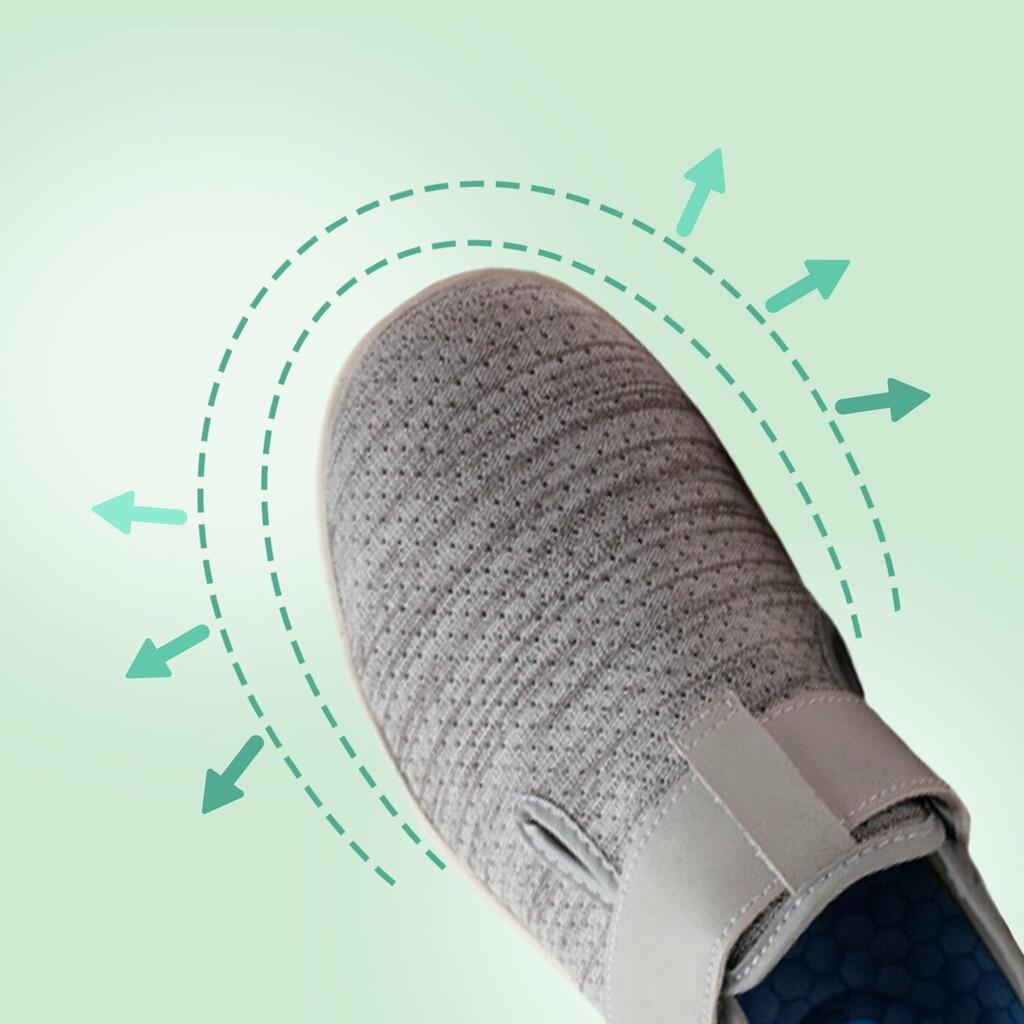

In conclusion, selecting the right nursing shoes is not just a matter of personal comfort; it’s a critical step towards ensuring your health and well-being while on the job. The materials and design of your shoes play a significant role in how you feel throughout your shifts and over the long term.
By prioritizing arch support, ample toe room, appropriate heel height, and sufficient cushioning, you’re not only investing in your daily comfort but also in your overall foot health and work performance.
Investing in high-quality nursing shoes is investing in your future in healthcare. With the right pair, you’ll be able to focus more on what you do best – caring for others – while knowing that your footwear is taking good care of you.

You have plenty of options! You can find quality nursing shoes at medical supply stores, specialty footwear stores, and online stores. As luck would have it, the Canles website offers a wide selection of excellent nursing shoes that are specially created for your needs.

How Barefoot Shoes Can Improve Foot Health: A Natural Solution for Common Foot Issues By John Keller | January 6, 2025 Foot health is essential for overall well-being, yet many…
7 Common Foot Issues in Women Over 50 and the Shoes that Can Help By Jane Sterling | Published on April 17, 2024 @ 2:18 PM Foot health is a…
9 Common Summer Foot Issues for People with Wide Feet By Jane Sterling | Published on April 15, 2024 @ 2:13 PM Summer brings a unique set of challenges for…
5 Signs You Need Better Arch Support Shoes By Jane Sterling | Published on July 15, 2024 @ 2:13 PM Are you constantly dealing with foot discomfort? Believe it or…
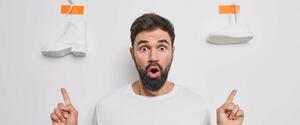
Dos and Don’ts of Shoe Shopping for Men: A Guide to Orthopedic Shoes By Jane Sterling | Published on November 8, 2024 @ 7:13 PM Selecting the right pair of…
How Diabetic Shoes for Men Help with Swollen Feet By Jane Sterling | Published on October 21, 2024 @ 1:10 PM When it comes to managing diabetes, every detail counts,…
To provide the best experiences, we and our partners use technologies like cookies to store and/or access device information. Consenting to these technologies will allow us and our partners to process personal data such as browsing behavior or unique IDs on this site and show (non-) personalized ads. Not consenting or withdrawing consent, may adversely affect certain features and functions.
Click below to consent to the above or make granular choices. Your choices will be applied to this site only. You can change your settings at any time, including withdrawing your consent, by using the toggles on the Cookie Policy, or by clicking on the manage consent button at the bottom of the screen.
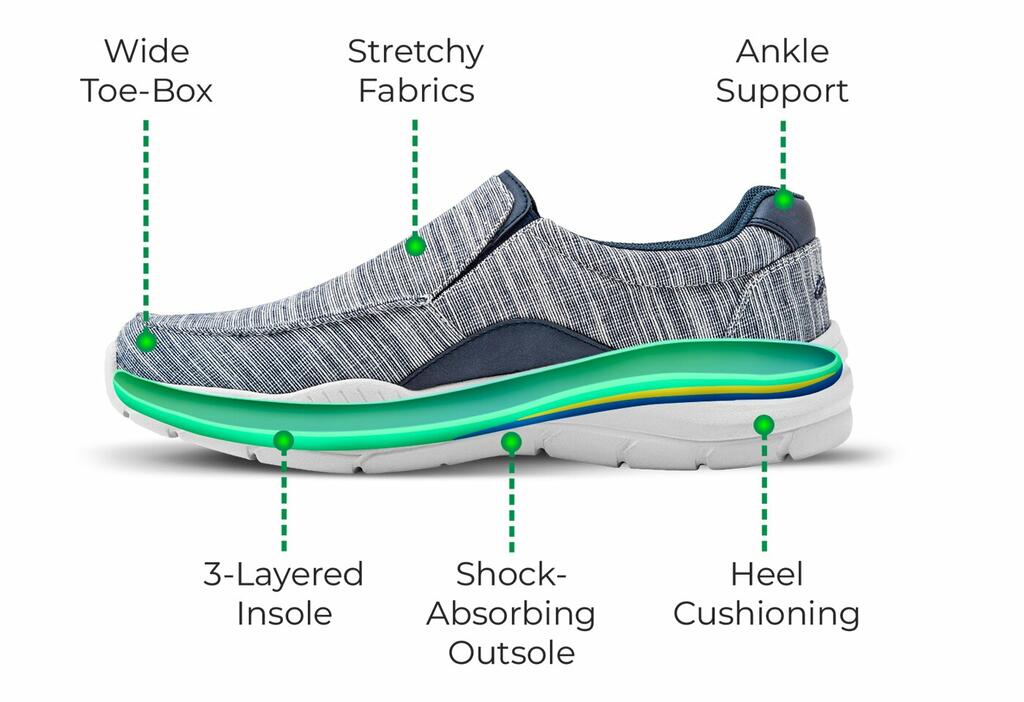


Switching to Canles footwear was a game-changer for me. Dealing with arthritic pain in both of my feet used to make each step a struggle. However, within a few days of wearing these shoes, I noticed a dramatic decrease in discomfort.
George C.Verified Customer


